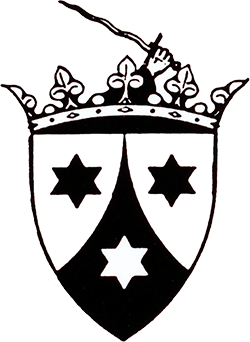The early life of Antonio Stradivari has long been debated by historians, as no documents have been found detailing his place and date of birth or any details of his early life. It is suspected he was born in a nearby village where he passed his youth. No church records in Cremona record his birth or baptism, and no documents such as leases or contracts mention his family until Stradivari is married. From these later documents bearing his age it is now believed Stradivari was born in 1644.
Stradivarius Style
The Stradivari style of violin making has some distinct characteristics, which has led many experts to suggest that he had a somewhat unusual training as a violin maker and, consequently, at the beginning of his career was considered to be an outsider by the established families of Cremona like Amati and Guarneri. His earliest known instrument from 1666 is not especially remarkable in any way, being made of inexpensive wood showing scant evidence of the fabulous toolwork seen in his later instruments. From this inauspicious beginning his ambition and determination to succeed can be seen in masterpieces of exceptional beauty and style he was making just a few years later.
Stradivari was a relentless experimenter and made a number of different models over the years, searching for a more beautiful tone. The debates about why his instruments have such marvelous tone began in the mid-19th Century and continue to this day, and unfortunately a lot of foolishness has been, and continues to be written about this topic. Speculation that the sound is due to the varnish, or special chemical treatments, or the density of the woods used, or special treatments of the woods, or fungi that was used to alter the wood….it goes on and on.
In my working life which began in the 1970s, a great deal of common sense has been applied to this question and while there are some aspects we still are not sure about, what we can say authoritatively is that Stradivari knew how to select wood of the finest acoustic quality, he understood how to work it superbly, and the design of his instruments was unsurpassed. As varnish undergoes significant chemical changes with time, knowing exactly what he applied to his instruments is more difficult. There is no way to analyze the coatings which still remain after so many years and deduce what and how it was applied. A more subtle issue in the puzzle is that the fame and glory of the man tend to dazzle investigators and look for complicated answers that match their idea of great genius, rather than what a talented workman of the 17th and 18th Century would have done.
Who Were Antonio Stradivari’s Parents?
Antonio Stradivari’s ancestry include notable citizens of Cremona, dating as far back as the 12th or 13th century. His parents were Alessandro Stradivari, son of Giulio Cesare Stradivari, and Anna Moroni, daughter of Leonardo Moroni. They married on August 30, 1622. According to the baptismal records of the parish of S. Prospero, his parents would wind up having at least three children between 1623 and 1628: Giuseppe Giulia Cesare, Carlo Felice, and Giovanni Battista.
But then the parish’s baptismal records for the family stop for reasons unknown. Many believe that the gap was caused by the family being forced to leave Cremona due to the war, famine, and plague that enveloped in the city from 1628 to 1630, and that Antonio was born in a nearby village.
Who Were Antonio Stradivari’s Children?
In 1667, Antonio Stradivari married Francesca Feraboschi, and soon after he would set up his own household and shop. The couple had six children together – Giulia Maria, Catterina, Francesco, Alessandro, and Omobono, as well as an infant son who lived for only a week.
Francesca died on May 20, 1699, and on August 24 of that same year, Antonio would marry his second wife, Antonia Maria Zambelli. From 1700 to 1708, the couple would have five children – Francesca Maria, Giovanni Battista Giuseppe, Giovanni Battista Martino, Giuseppe Antonio, and Paolo. Three of his sons worked as violin makers; Giovanni Battista Martino from his second marriage died at the age of 24, just around the time he would have finished his apprenticeship. Francesco and Omobono from his first marriage inherited the shop but did not live as long as their father, passing to a better life just a few years after the death of Antonio, Francesco at the age of 72 and Omobono at 63.

